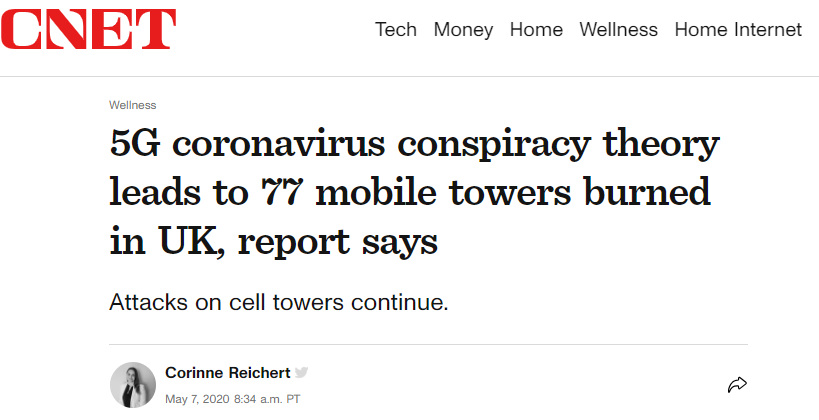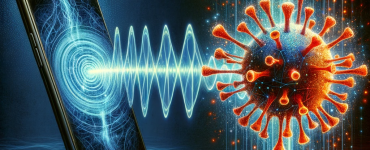Censorship has reached unprecedented heights in 2024. Even those who previously championed absolute freedom of speech are now limiting the dissemination of information regarding wireless radiation.

Addressing the concerns surrounding 5G technology and its potential health effects is indeed a complex and multifaceted issue. Indeed, suppressing or censoring information is not an effective or appropriate way to address public concerns. Instead, open dialogue, transparent communication of scientific findings, and responsive public policy are crucial.
The lawsuit against the FCC over its guidelines for radiofrequency (RF) radiation exposure highlights the debate about the adequacy of these regulations. The plaintiffs in this case argued that the FCC’s guidelines, which are primarily based on thermal effects and date back to 1996, do not adequately consider more recent research on the non-thermal effects of RF radiation. This lawsuit emphasizes the need for current regulations to be reassessed in light of new scientific findings.
Furthermore, the FDA-approved TheraBionic treatment, which uses RF radiation at power levels far lower than cell phones to effectively treat liver cancer, underscores the complexity of RF radiation’s biological effects. This treatment illustrates that non-thermal interactions at cellular or molecular levels are biologically significant, challenging the traditional view that non-ionizing radiation is mainly of concern due to its heating properties.
The issue is further complicated by the polarized nature of the debate, where on the wireless industry side, some regulatory bodies and parts of the scientific community maintain that 5G technology is safe based on current standards and evidence, while on the other side, there is decades of research suggesting potential health risks and public concern.
To address these concerns effectively, it’s important for regulatory bodies like the FCC and health organizations to:
- Engage in ongoing review and assessment of scientific research regarding RF radiation’s health impacts, including non-thermal effects.
- Update safety guidelines and exposure limits based on the latest scientific understanding, ensuring they reflect the full spectrum of potential health effects.
- Ensure transparency in the decision-making process and in communicating the basis for safety standards.
- Promote and fund independent research to address existing gaps in knowledge about the health effects of RF radiation, particularly in the context of newer technologies like 5G.
This approach can help to address public concerns more constructively, ensuring that health and safety standards for 5G technology are based on a comprehensive and up-to-date understanding of the science.
Until these health concerns have been properly addressed I don’t expect to see the destruction of 5G cell towers ending anytime soon. Governments have a responsibility to protect their citizens and when they fail to do this – the people will protect themselves – this is the truth about the destruction of 5G cell towers and the mass censorship taking place on the issue of 5G health concerns overlaying COVID!
Heroic or disgraceful vandalism?? 😉

The conspiracy of Covid-19 and 5G, like many other conspiracies in the COVID era – have a lot of truth to them new research suggests!
The interplay between COVID-19, Mast Cell Activation Syndrome (MCAS), Reactive Oxygen Species (ROS), and wireless radiation represents a complex and evolving area of scientific inquiry. The potential connection between these elements involves a range of scientific disciplines, including immunology, virology, and environmental health.
- Mast Cell Activation Syndrome (MCAS) and COVID-19: MCAS is an immunological condition where mast cells release chemical mediators in an exaggerated manner, leading to a spectrum of symptoms. The link between MCAS and COVID-19 is an area of ongoing research. Post-COVID conditions, often referred to as “Long COVID,” exhibit a range of symptoms that could potentially overlap with MCAS. This raises questions about whether COVID-19 might trigger or exacerbate MCAS in certain individuals.
- Wireless Radiation and Health Impacts: The health impacts of non-ionizing electromagnetic fields (EMFs), such as those from wireless devices, have been a subject of debate. Some studies suggest potential health risks, including cancer, neurological disorders, and other chronic conditions.
- Wireless Radiation and Immune Response: There is a hypothesis, such as the one proposed by Gangi and Johansson, that suggests EMFs could trigger mast cell activation, potentially contributing to conditions like MCAS. This model, if accurate, might provide a mechanism for understanding the diverse symptoms observed in long-term COVID-19 cases.
- ROS, RFR, and COVID-19 Recovery: The role of Reactive Oxygen Species (ROS) in the context of COVID-19 is significant, as the virus can trigger an inflammatory response leading to increased ROS production and oxidative stress. The hypothesis that radiofrequency radiation (RFR) from wireless devices could exacerbate ROS production during COVID-19 recovery is a subject of research. This could have implications for the severity of symptoms or the recovery process in COVID-19 patients.
- Potential Link Between ROS, COVID-19, Vaccines, and Wireless Radiation: The hypothesis that the combined effect of ROS from the SARS-CoV-2 virus’s spike protein, COVID-19 vaccines, and cell phone radiation could lead to health conditions like “Turbo Cancers” is speculative and not widely supported in the scientific community. This theory posits an interaction between these factors, leading to a cascade of ROS overproduction and chronic oxidative stress.
It’s important to note that while these theories and hypotheses are being explored, they remain areas of active scientific debate and require further research. The relationships between COVID-19, MCAS, wireless radiation, and ROS are complex and not fully understood.
















